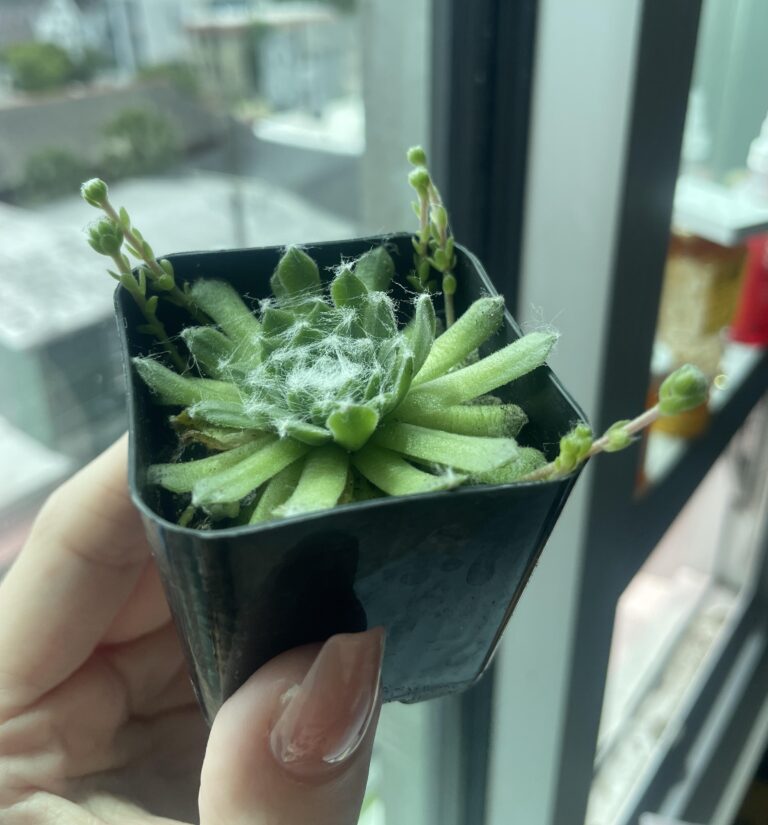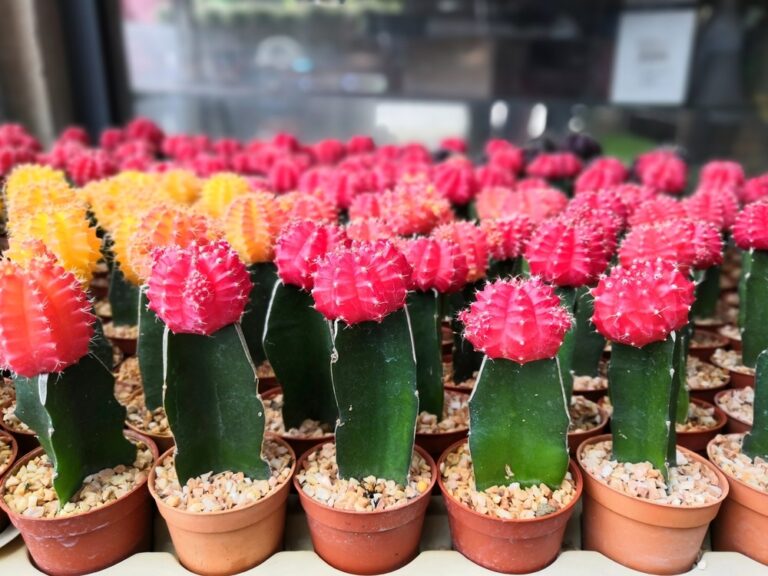The Ultimate Guide to Succulent Cactus with Pink Flowers

Succulent cactus with pink flowers is some of the most stunning additions to any plant collection. Their vibrant blooms provide a striking contrast to their hardy green structures, captivating both novice and experienced gardeners. This guide explores the beauty, care, and benefits of growing succulent cacti with pink flowers. From species identification to tips for encouraging blooms, this comprehensive post covers everything you need to know.
What Are Succulent Cacti with Pink Flowers?
Characteristics of Succulent Cacti with Pink Flowers
Succulent cacti with pink flowers are plants that combine the drought-resistant properties of succulents with the vibrant hues of pink blossoms. These plants often feature thick, fleshy stems or leaves designed to store water, allowing them to survive in arid conditions. Their flowers, ranging from soft pastel pinks to vibrant magentas, are a key attraction for gardeners.
- Examples include Christmas Cactus, Echinopsis, and Gymnocalycium.
- Pink flowers often symbolize love and compassion, making them a favorite for ornamental displays.
- Some species bloom seasonally, while others produce flowers year-round under optimal conditions.
Types of Succulent Cacti That Produce Pink Flowers
There is a wide variety of succulent cacti with pink flowers, each boasting unique shapes, sizes, and bloom patterns.
| Species | Common Name | Flowering Season |
| Echinopsis | Hedgehog Cactus | Late Spring to Summer |
| Schlumbergera | Christmas Cactus | Winter |
| Mammillaria | Powder Puff Cactus | Spring to Fall |
Why Choose Cacti with Pink Flowers?
Succulent cacti with pink flowers are perfect for:
- Brightening indoor spaces with their cheerful blooms.
- Low-maintenance gardening, ideal for busy plant lovers.
- Air purification contributes to a healthier environment.
Popular Varieties of Succulent Cactus with Pink Flowers
Echinopsis: The Hedgehog Cactus
Echinopsis, also known as the Hedgehog cactus, is celebrated for its showy, trumpet-shaped pink flowers.
- Flowers can reach up to 6 inches in diameter, creating a stunning display.
- Requires full sun and well-draining soil.
- Blooms for a short period, but the flowers are intensely fragrant.
Schlumbergera: The Christmas Cactus
The Christmas cactus is a popular houseplant, particularly during the holiday season.
- Blooms in shades of pink, red, and white.
- Prefers indirect sunlight and slightly humid conditions.
- Produces flowers when exposed to cooler temperatures and reduced light in the fall.
Mammillaria: The Powder Puff Cactus
This small, globe-shaped cactus is adorned with delicate pink flowers that form a crown around the top.
- Thrives in bright sunlight and sandy soil.
- Flowers appear multiple times a year with proper care.
- Its compact size makes it suitable for small spaces.
Ideal Growing Conditions for Succulent Cacti with Pink Flowers
Sunlight Requirements
Succulent cacti require ample sunlight to bloom. Aim for:
- 6–8 hours of bright, direct sunlight daily for outdoor plants.
- Indirect sunlight or filtered light for indoor species like the Christmas cactus.
Soil Composition
The right soil is crucial for healthy growth. Use:
- Well-draining cactus potting mix.
- A DIY mix of 50% sand, 30% potting soil, and 20% perlite or pumice.
- Avoid heavy or clay soils that retain water and cause root rot.
Temperature and Humidity
Succulent cacti thrive in warm temperatures ranging from 60°F to 90°F. However, some species can tolerate brief cold spells. Indoor plants should be kept in environments with 40–60% humidity to prevent desiccation.
Watering Succulent Cactus Plants with Pink Flowers
How Often Should You Water?
Watering schedules depend on the season:
- During the growing season (spring and summer), water once the soil is completely dry.
- Reduce watering in the dormant season (fall and winter) to prevent overwatering.
Signs of Overwatering and Underwatering
Look out for these signs to adjust your watering habits:
| Condition | Symptoms | Solution |
| Overwatering | Yellowing stems, mushy roots | Allow soil to dry completely; repot if needed. |
| Underwatering | Wrinkled or shriveled stems/leaves | Water thoroughly and monitor regularly. |
Best Watering Practices
- Always use pots with drainage holes.
- Water early in the day to allow the plant to dry before nightfall.
- Avoid wetting the flowers directly to prevent damage.
Fertilizing Succulent Cacti for Enhanced Blooms
Types of Fertilizers to Use
Choose fertilizers with a balanced ratio of nitrogen (N), phosphorus (P), and potassium (K), such as 10-10-10 or a cactus-specific fertilizer.
- Fertilizers with a higher phosphorus content encourage flowering.
- Slow-release granules are ideal for a consistent nutrient supply.
How and When to Fertilize
- Fertilize during the active growing season (spring and summer).
- Apply fertilizer once every 4–6 weeks for best results.
- Avoid fertilizing in winter when plants are dormant.
Avoiding Over-Fertilization
Excess fertilizer can cause salt buildup in the soil, leading to:
- Stunted growth.
- Discoloration of leaves or stems.
Flush the soil with water every few months to remove excess salts.
Propagation Methods for Succulent Cacti with Pink Flowers
Propagation Through Cuttings
Cuttings are one of the easiest ways to propagate succulent cacti:
- How to Take Cuttings: Use a sterile, sharp knife to cut a healthy stem. Allow the cutting to callus over for a few days before planting.
- Planting the Cutting: Insert the callused end into a well-draining soil mix. Water sparingly until roots form.
- Best Time to Propagate: Spring and early summer when the plant is actively growing.
Propagation Through Seeds
Growing from seeds requires patience but is rewarding:
- Seed Collection: Collect seeds from dried flowers after they have pollinated.
- Planting the Seeds: Sow seeds in a shallow tray filled with a cactus-specific soil mix.
- Care for Seedlings: Keep the tray in a warm, humid location. Germination can take several weeks.
Comparing Propagation Methods
| Method | Difficulty | Time to Maturity | Success Rate |
| Cuttings | Easy | 6–12 months | High |
| Seeds | Moderate | 1–3 years | Moderate |
Common Pests and Diseases
Pests Affecting Succulent Cacti
Succulent cacti with pink flowers are prone to pests like:
- Mealybugs: These white, cotton-like insects sap the plant’s nutrients. Treat with neem oil or insecticidal soap.
- Spider Mites: Tiny red or brown pests causing webbing on the plant. Wash with water or use a miticide.
- Scale Insects: Brown, oval pests that cling to stems. Remove manually and treat with horticultural oil.
Diseases and Their Symptoms
Common diseases include:
- Root Rot: Caused by overwatering. Symptoms include black, mushy roots.
- Fungal Infections: Brown or black spots on the stems. Apply a fungicide to control.
- Bacterial Soft Rot: Affects damaged plant areas, causing decay. Remove infected parts immediately.
Preventing Pests and Diseases
- Ensure proper drainage to prevent waterlogging.
- Maintain good air circulation around the plant.
- Regularly inspect plants and isolate infected ones immediately.
Seasonal Care for Succulent Cacti
Spring and Summer Care
During the growing season:
- Sunlight: Ensure 6–8 hours of direct sunlight daily.
- Watering: Increase watering frequency but allow the soil to dry completely between sessions.
- Fertilizing: Feed every 4–6 weeks with a phosphorus-rich fertilizer.
Fall and Winter Care
During dormancy:
- Sunlight: Move indoor plants to a bright location with indirect light.
- Watering: Reduce watering to once every 4–6 weeks.
- Temperature: Protect outdoor plants from frost by covering them or bringing them indoors.
Adapting Care to Climate Zones
| Climate Zone | Key Adjustments |
| Arid/Hot | Provide shade during peak afternoon sun. |
| Temperate | Ensure good drainage to avoid waterlogging. |
| Cold/Freezing | Move plants indoors or insulate outdoors. |
Decorating with Succulent Cacti
Indoor Displays
Succulent cacti with pink flowers make excellent indoor decorations:
- Place them on windowsills for maximum sunlight.
- Use decorative pots to enhance their visual appeal.
- Create a cactus garden by grouping different species.
Outdoor Landscaping
In outdoor settings, these cacti can:
- Serve as focal points in rock gardens.
- Be planted along pathways for a splash of color.
- Pair well with other drought-tolerant plants like agaves and yuccas.
Creative Display Ideas
- Hanging Planters: Perfect for cascading varieties like the Christmas cactus.
- Terrariums: Showcase multiple species in a small space.
- Wall Gardens: Attach pots to a vertical frame for a living wall.
Benefits of Growing Succulent Cactus with Pink Flowers
Low Maintenance
These plants require minimal care, making them ideal for busy individuals or beginner gardeners.
Health and Environmental Benefits
- Air Purification: Removes toxins like carbon dioxide from the air.
- Stress Reduction: Caring for plants is a proven stress reliever.
Aesthetic Appeal
- Adds a touch of natural beauty to any space.
- Pink flowers create a cheerful, inviting atmosphere.
Troubleshooting Common Issues
Why Isn’t My Cactus Blooming?
- Problem: Lack of light or nutrients.
- Solution: Provide adequate sunlight and fertilize during the growing season.
Dealing with Leggy Growth
- Problem: Insufficient light.
- Solution: Move the plant to a sunnier location or provide artificial grow lights.
Reviving a Dying Plant
- Identify the issue (overwatering, pests, or nutrient deficiency).
- Take corrective measures such as repotting, treating pests, or improving care.
Frequently Asked Questions
How Often Should I Water My Succulent Cactus? Water only when the soil is completely dry, typically every 2–3 weeks.
Can Succulent Cacti Survive in Low Light? While some species tolerate low light, most thrive in bright, indirect sunlight.
What Is the Best Soil Mix for These Plants? Use a cactus-specific potting mix or a DIY mix with sand, perlite, and potting soil.
How Can I Encourage My Cactus to Bloom? Provide ample sunlight, reduce watering in winter, and fertilize during the growing season.
Are These Plants Safe for Pets? Some species may be toxic to pets. Research the specific cactus variety before introducing it to your home.
Conclusion
Succulent cactus with pink flowers is a delightful addition to any plant collection. Their vibrant blooms, combined with their hardy nature, make them both beautiful and practical. By following the care tips outlined in this guide, you can enjoy healthy, thriving plants that brighten your home or garden year-round. From propagation techniques to troubleshooting common problems, this comprehensive resource ensures your success with these stunning plants.






